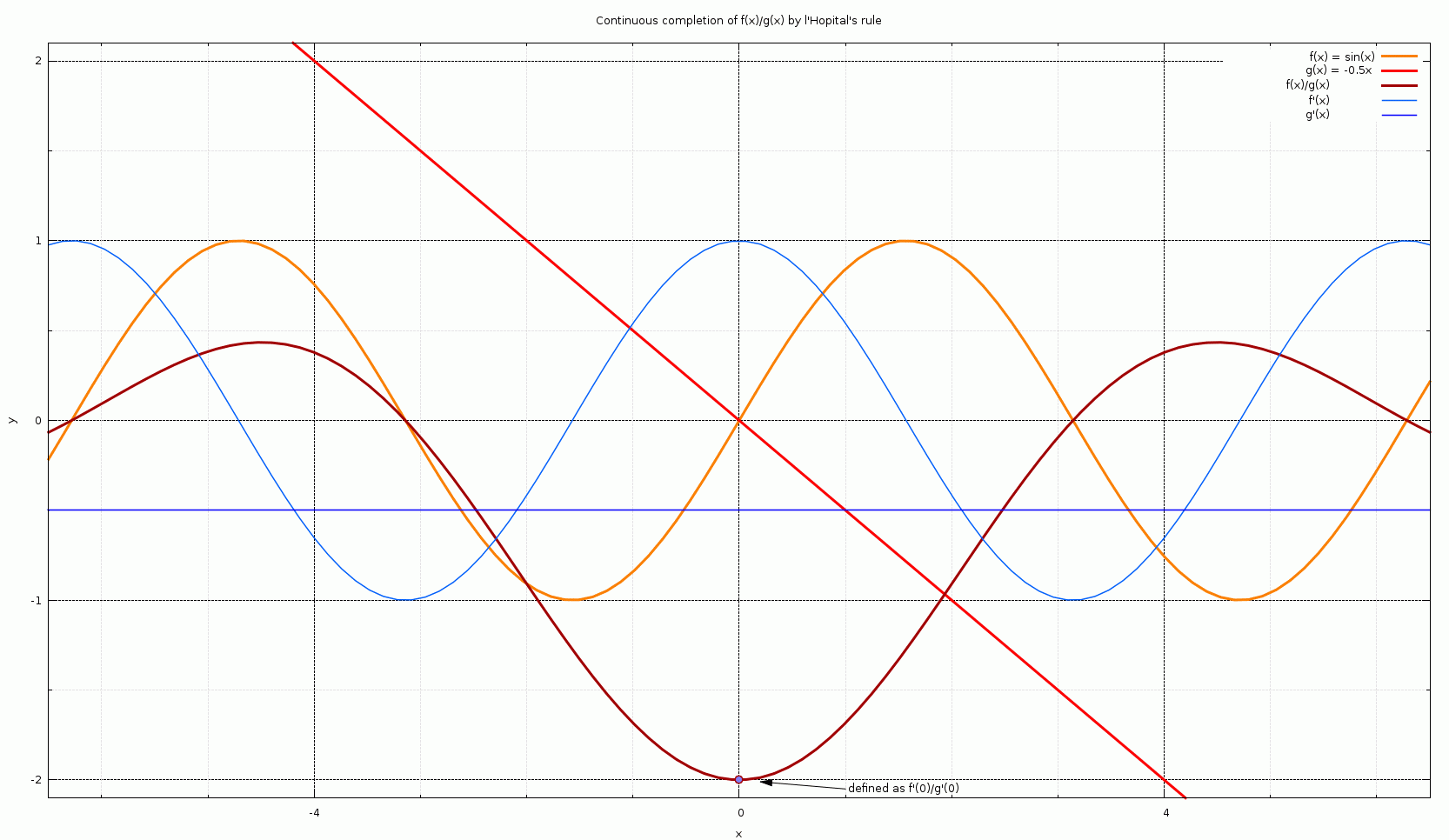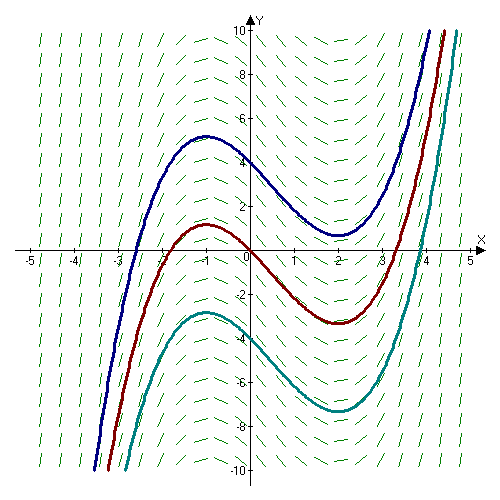|
AP Calculus
Advanced Placement (AP) Calculus (also known as AP Calc, Calc AB / Calc BC or simply AB / BC) is a set of two distinct Advanced Placement calculus courses and exams offered by the American nonprofit organization College Board. AP Calculus AB covers basic introductions to limits, derivatives, and integrals. AP Calculus BC covers all AP Calculus AB topics plus additional topics (including more advanced integration techniques such as integration by parts, Taylor series, parametric equations, vector calculus, polar coordinate functions, and curve interpolations). AP Calculus AB AP Calculus AB is an Advanced Placement calculus course. It is traditionally taken after precalculus and is the first calculus course offered at most schools except for possibly a regular calculus class. The Pre-Advanced Placement pathway for math helps prepare students for further Advanced Placement classes and exams. Purpose According to the College Board: Topic outline The material includes the stu ... [...More Info...] [...Related Items...] OR: [Wikipedia] [Google] [Baidu] |
Advanced Placement
Advanced Placement (AP) is a program in the United States and Canada created by the College Board which offers college-level curriculum, curricula and examinations to high school students. American colleges and universities may grant placement and course credit to students who obtain high scores on the examinations. The AP curriculum for each of the various subjects is created for the College Board by a panel of experts and college-level educators in that Discipline (academia), field of study. For a high school course to have the designation, the course must be audited by the College Board to ascertain that it satisfies the AP curriculum as specified in the Board's Course and Examination Description (CED). If the course is approved, the school may use the AP designation and the course will be publicly listed on the AP Course Ledger. History After the end of World War II, the Ford Foundation created a fund that supported committees studying education. The program, which was then ... [...More Info...] [...Related Items...] OR: [Wikipedia] [Google] [Baidu] |
Derivative
In mathematics, the derivative of a function of a real variable measures the sensitivity to change of the function value (output value) with respect to a change in its argument (input value). Derivatives are a fundamental tool of calculus. For example, the derivative of the position of a moving object with respect to time is the object's velocity: this measures how quickly the position of the object changes when time advances. The derivative of a function of a single variable at a chosen input value, when it exists, is the slope of the tangent line to the graph of the function at that point. The tangent line is the best linear approximation of the function near that input value. For this reason, the derivative is often described as the "instantaneous rate of change", the ratio of the instantaneous change in the dependent variable to that of the independent variable. Derivatives can be generalized to functions of several real variables. In this generalization, the deriv ... [...More Info...] [...Related Items...] OR: [Wikipedia] [Google] [Baidu] |
Integration By Parts
In calculus, and more generally in mathematical analysis, integration by parts or partial integration is a process that finds the integral of a product of functions in terms of the integral of the product of their derivative and antiderivative. It is frequently used to transform the antiderivative of a product of functions into an antiderivative for which a solution can be more easily found. The rule can be thought of as an integral version of the product rule of differentiation. The integration by parts formula states: \begin \int_a^b u(x) v'(x) \, dx & = \Big (x) v(x)\Biga^b - \int_a^b u'(x) v(x) \, dx\\ & = u(b) v(b) - u(a) v(a) - \int_a^b u'(x) v(x) \, dx. \end Or, letting u = u(x) and du = u'(x) \,dx while v = v(x) and dv = v'(x) \, dx, the formula can be written more compactly: \int u \, dv \ =\ uv - \int v \, du. Mathematician Brook Taylor discovered integration by parts, first publishing the idea in 1715. More general formulations of integration by parts e ... [...More Info...] [...Related Items...] OR: [Wikipedia] [Google] [Baidu] |
Arc Length
ARC may refer to: Business * Aircraft Radio Corporation, a major avionics manufacturer from the 1920s to the '50s * Airlines Reporting Corporation, an airline-owned company that provides ticket distribution, reporting, and settlement services * Airport Regions Conference, a European organization of major airports * Amalgamated Roadstone Corporation, a British stone quarrying company * American Record Company (1904–1908, re-activated 1979), one of two United States record labels by this name * American Record Corporation (1929–1938), a United States record label also known as American Record Company * ARC (American Recording Company) (1978-present), a vanity label for Earth, Wind & Fire * ARC Document Solutions, a company based in California, formerly American Reprographics Company * Amey Roadstone Construction, a former British construction company * Aqaba Railway Corporation, a freight railway in Jordan * ARC/Architectural Resources Cambridge, Inc., Cambridge, Massach ... [...More Info...] [...Related Items...] OR: [Wikipedia] [Google] [Baidu] |
Polar Coordinate System
In mathematics, the polar coordinate system is a two-dimensional coordinate system in which each point on a plane is determined by a distance from a reference point and an angle from a reference direction. The reference point (analogous to the origin of a Cartesian coordinate system) is called the ''pole'', and the ray from the pole in the reference direction is the ''polar axis''. The distance from the pole is called the ''radial coordinate'', ''radial distance'' or simply ''radius'', and the angle is called the ''angular coordinate'', ''polar angle'', or ''azimuth''. Angles in polar notation are generally expressed in either degrees or radians (2 rad being equal to 360°). Grégoire de Saint-Vincent and Bonaventura Cavalieri independently introduced the concepts in the mid-17th century, though the actual term "polar coordinates" has been attributed to Gregorio Fontana in the 18th century. The initial motivation for the introduction of the polar system was the study of ... [...More Info...] [...Related Items...] OR: [Wikipedia] [Google] [Baidu] |
Parametric Equation
In mathematics, a parametric equation defines a group of quantities as functions of one or more independent variables called parameters. Parametric equations are commonly used to express the coordinates of the points that make up a geometric object such as a curve or surface, in which case the equations are collectively called a parametric representation or parameterization (alternatively spelled as parametrisation) of the object. For example, the equations :\begin x &= \cos t \\ y &= \sin t \end form a parametric representation of the unit circle, where ''t'' is the parameter: A point (''x'', ''y'') is on the unit circle if and only if there is a value of ''t'' such that these two equations generate that point. Sometimes the parametric equations for the individual scalar output variables are combined into a single parametric equation in vectors: :(x, y)=(\cos t, \sin t). Parametric representations are generally nonunique (see the "Examples in two dimensions" section ... [...More Info...] [...Related Items...] OR: [Wikipedia] [Google] [Baidu] |
Convergence Tests
In mathematics, convergence tests are methods of testing for the convergence, conditional convergence, absolute convergence, interval of convergence or divergence of an infinite series \sum_^\infty a_n. List of tests Limit of the summand If the limit of the summand is undefined or nonzero, that is \lim_a_n \ne 0, then the series must diverge. In this sense, the partial sums are Cauchy only if this limit exists and is equal to zero. The test is inconclusive if the limit of the summand is zero. This is also known as the nth-term test, test for divergence, or the divergence test. Ratio test This is also known as d'Alembert's criterion. : Suppose that there exists r such that :: \lim_\left, \frac\ = r. : If ''r'' 1, then the series diverges. If ''r'' = 1, the ratio test is inconclusive, and the series may converge or diverge. Root test This is also known as the ''n''th root test or Cauchy's criterion. : Let :: r=\limsup_\sqrt : where \limsup denotes the limit superior (pos ... [...More Info...] [...Related Items...] OR: [Wikipedia] [Google] [Baidu] |
Separation Of Variables
In mathematics, separation of variables (also known as the Fourier method) is any of several methods for solving ordinary and partial differential equations, in which algebra allows one to rewrite an equation so that each of two variables occurs on a different side of the equation. Ordinary differential equations (ODE) Suppose a differential equation can be written in the form :\frac f(x) = g(x)h(f(x)) which we can write more simply by letting y = f(x): :\frac=g(x)h(y). As long as ''h''(''y'') ≠ 0, we can rearrange terms to obtain: : = g(x) \, dx, so that the two variables ''x'' and ''y'' have been separated. ''dx'' (and ''dy'') can be viewed, at a simple level, as just a convenient notation, which provides a handy mnemonic aid for assisting with manipulations. A formal definition of ''dx'' as a differential (infinitesimal) is somewhat advanced. Alternative notation Those who dislike Leibniz's notation may prefer to write this as :\frac \frac = g(x), but tha ... [...More Info...] [...Related Items...] OR: [Wikipedia] [Google] [Baidu] |
L'Hôpital's Rule
In calculus, l'Hôpital's rule or l'Hospital's rule (, , ), also known as Bernoulli's rule, is a theorem which provides a technique to evaluate limits of indeterminate forms. Application (or repeated application) of the rule often converts an indeterminate form to an expression that can be easily evaluated by substitution. The rule is named after the 17th-century French mathematician Guillaume de l'Hôpital. Although the rule is often attributed to l'Hôpital, the theorem was first introduced to him in 1694 by the Swiss mathematician Johann Bernoulli. L'Hôpital's rule states that for functions and which are differentiable on an open interval except possibly at a point contained in , if \lim_f(x)=\lim_g(x)=0 \text \pm\infty, and g'(x)\ne 0 for all in with , and \lim_\frac exists, then :\lim_\frac = \lim_\frac. The differentiation of the numerator and denominator often simplifies the quotient or converts it to a limit that can be evaluated directly. History Guilla ... [...More Info...] [...Related Items...] OR: [Wikipedia] [Google] [Baidu] |
Antiderivative
In calculus, an antiderivative, inverse derivative, primitive function, primitive integral or indefinite integral of a function is a differentiable function whose derivative is equal to the original function . This can be stated symbolically as . The process of solving for antiderivatives is called antidifferentiation (or indefinite integration), and its opposite operation is called ''differentiation'', which is the process of finding a derivative. Antiderivatives are often denoted by capital Roman letters such as and . Antiderivatives are related to definite integrals through the second fundamental theorem of calculus: the definite integral of a function over a closed interval where the function is Riemann integrable is equal to the difference between the values of an antiderivative evaluated at the endpoints of the interval. In physics, antiderivatives arise in the context of rectilinear motion (e.g., in explaining the relationship between position, velocity and acceler ... [...More Info...] [...Related Items...] OR: [Wikipedia] [Google] [Baidu] |
Fundamental Theorem Of Calculus
The fundamental theorem of calculus is a theorem that links the concept of differentiating a function (calculating its slopes, or rate of change at each time) with the concept of integrating a function (calculating the area under its graph, or the cumulative effect of small contributions). The two operations are inverses of each other apart from a constant value which depends on where one starts to compute area. The first part of the theorem, the first fundamental theorem of calculus, states that for a function , an antiderivative or indefinite integral may be obtained as the integral of over an interval with a variable upper bound. This implies the existence of antiderivatives for continuous functions. Conversely, the second part of the theorem, the second fundamental theorem of calculus, states that the integral of a function over a fixed interval is equal to the change of any antiderivative between the ends of the interval. This greatly simplifies the calculation ... [...More Info...] [...Related Items...] OR: [Wikipedia] [Google] [Baidu] |
Numerical Integration
In analysis, numerical integration comprises a broad family of algorithms for calculating the numerical value of a definite integral, and by extension, the term is also sometimes used to describe the numerical solution of differential equations. This article focuses on calculation of definite integrals. The term numerical quadrature (often abbreviated to ''quadrature'') is more or less a synonym for ''numerical integration'', especially as applied to one-dimensional integrals. Some authors refer to numerical integration over more than one dimension as cubature; others take ''quadrature'' to include higher-dimensional integration. The basic problem in numerical integration is to compute an approximate solution to a definite integral :\int_a^b f(x) \, dx to a given degree of accuracy. If is a smooth function integrated over a small number of dimensions, and the domain of integration is bounded, there are many methods for approximating the integral to the desired precision. ... [...More Info...] [...Related Items...] OR: [Wikipedia] [Google] [Baidu] |




